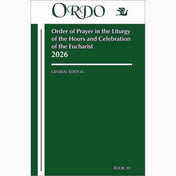From the desk of the Tar Heel disciple:
September 22, 2025
On Saturday, September 13, a solemn Mass of Thanksgiving for the canonization of the Carmelite Martyrs of Compiègne was celebrated at Notre Dame Cathedral in Paris. These 11 choir nuns, 3 lay sisters, and 2 tertiaries (“externs”), members of a Carmelite convent situated about 70 kilometers from Paris, were executed because of their Catholic faith in the waning days of the Reign of Terror during the French Revolution, on July 17, 1794. They were declared saints by the late Pope Francis on December 18, 2024. They were the first victims of the French Revolution to be recognized as martyrs of the faith when they were beatified (i.e., declared “Blessed”) by Pope St. Pius X in 1906.
In declaring them saints, Pope Francis used an extraordinary method, called “equipollent (equivalent) canonization.” In doing such, he dispensed with the usual ecclesiastical processes for canonization (including the examination of miracles through their intercession), which can be done in those cases where there has been a long-standing and continuous veneration by the faithful. This was the eighth time during his pontificate that he used this method. (In contrast, Pope Benedict XVI used it only once, in 2012, for St. Hildegard of Bingen, whom he also declared to be a Doctor of the Church).
The story of the martyrdom of these women has been popularized by various books, a play, a movie, and even an opera. Their persecution by the revolutionaries began shortly after the fall of the Bastille in 1790. On July 17, 1794, the sisters were conveyed in an open cart through the streets of Paris to the place of their execution by guillotine. During that time, they openly prayed and sang hymns. It is said that a large crowd gathered to watch the spectacle of their execution, but the sisters showed no fear and forgave their executioners. The sisters renewed their baptismal and religious vows together and chanted the Veni Creator. They then sang Psalm 116 (Laudate Dominum) as the first, the youngest of the community went to her death. Though the choir became smaller with each execution, a song of praise continued until the last voice was silenced. The prioress, Mother Teresa, died last. It is reported that the usually boisterous mob was silent.
Thousands of other Catholics died as martyrs for the Faith during this time, and many of them have now been numbered among the blessed and saints of the Church. But perhaps the witness of this small group of women religious is particularly poignant, and ought to be a cause of thanksgiving, inspiration, and veneration for all of us.
A book about the Carmelite Martyrs of Compiègne





